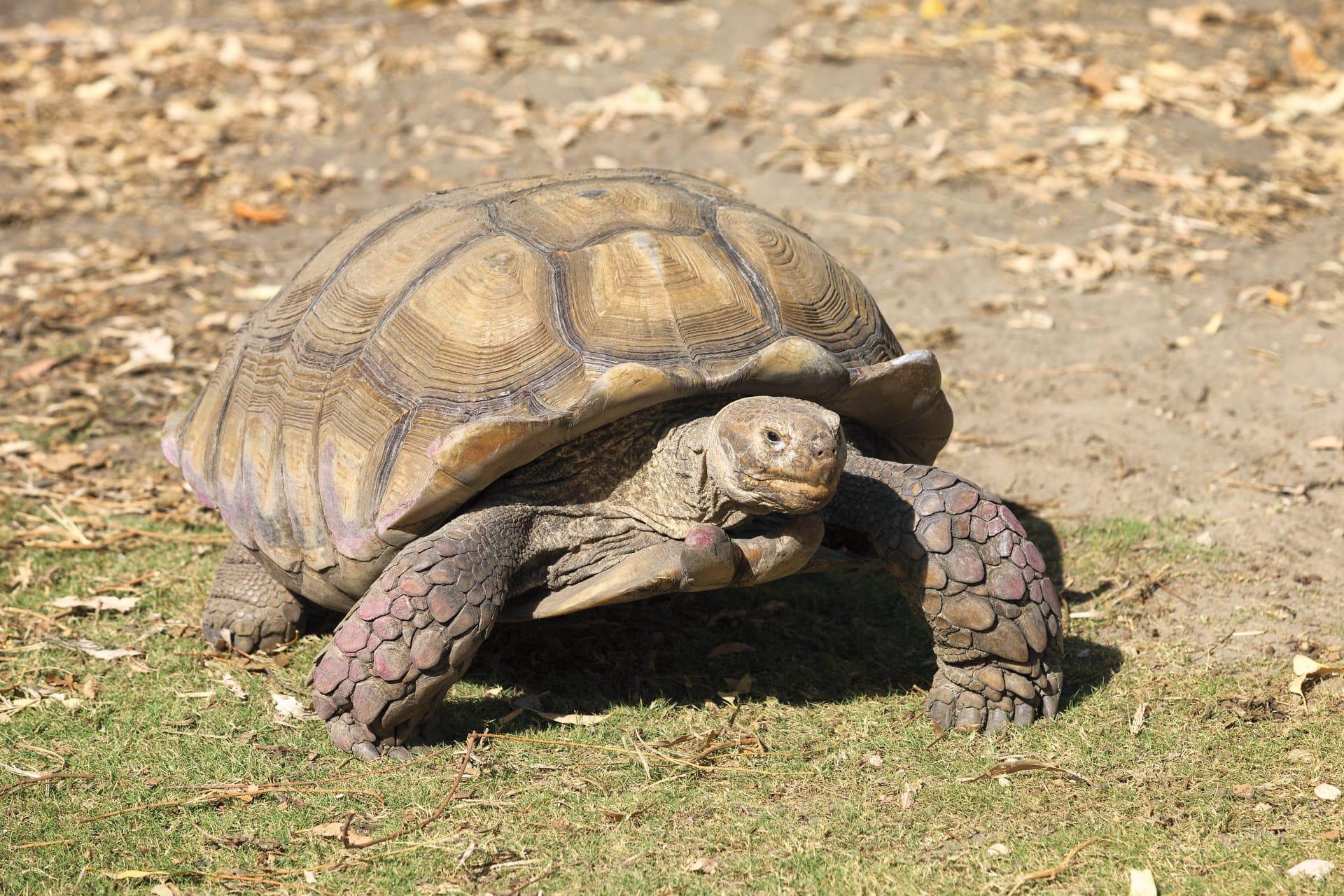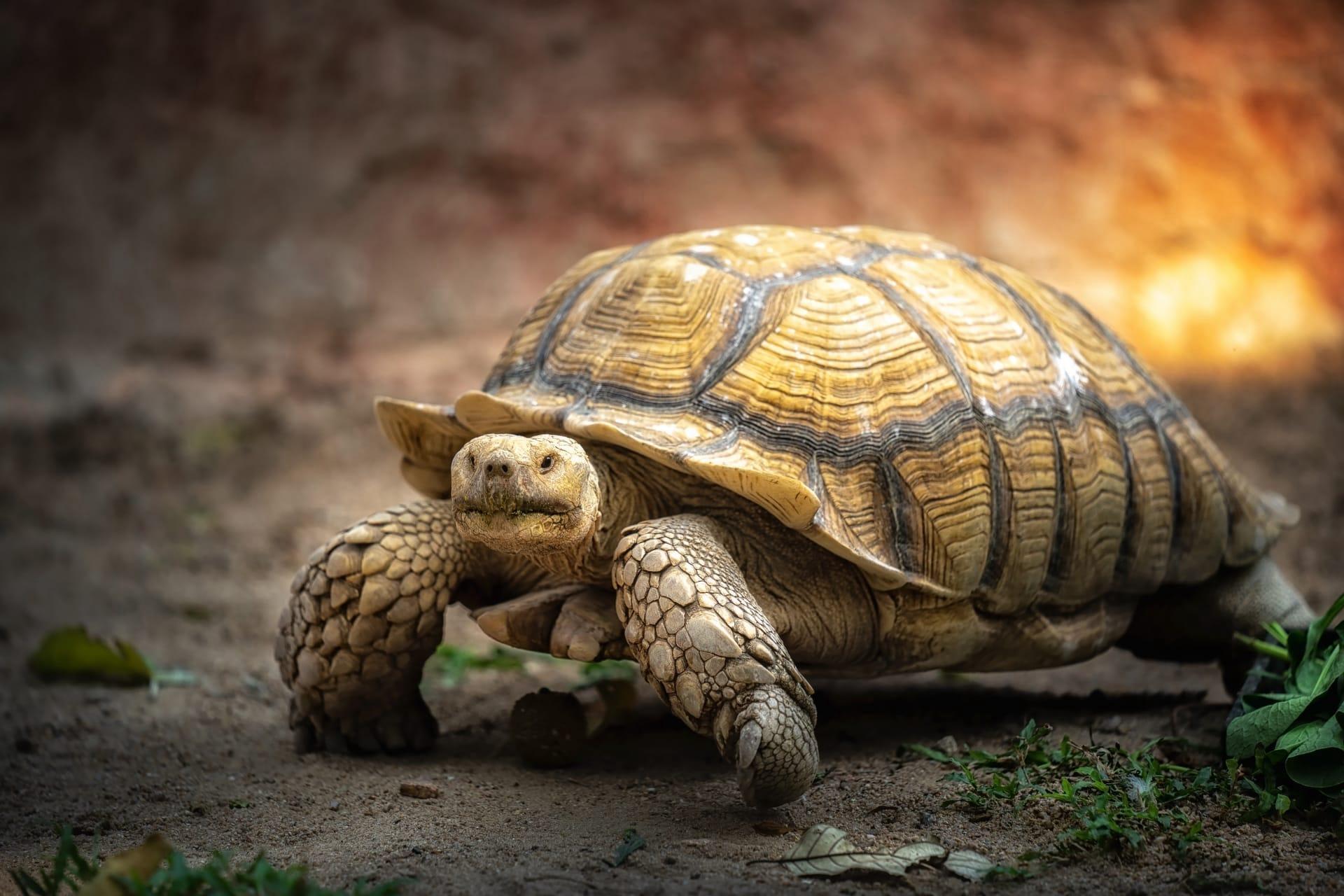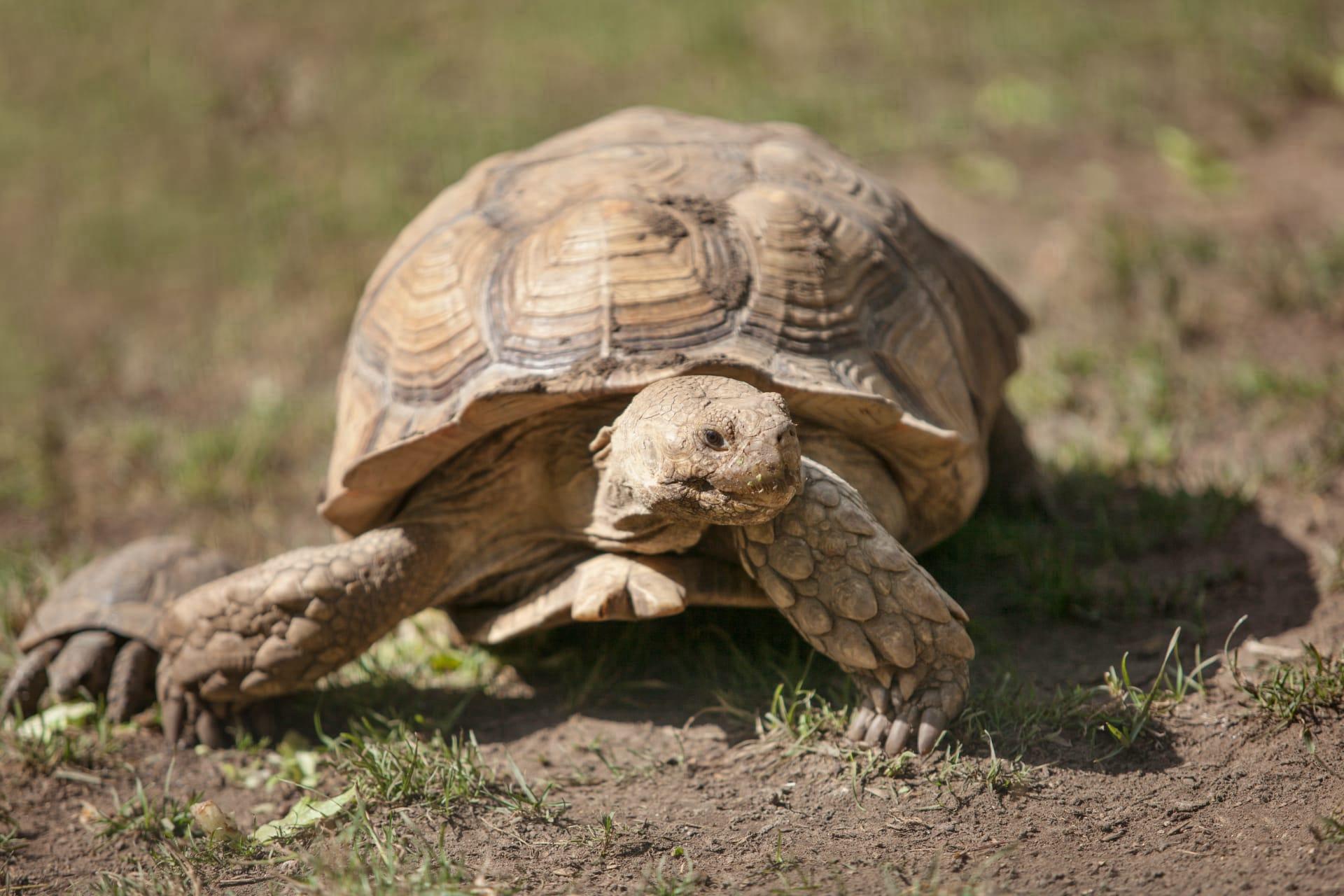1
Did you know that the Desert Tortoise, a resilient dweller of the harsh desert, can live up to 80 years? That's a long time, especially considering the tough conditions they endure! These tortoises are not just about longevity; they have a unique way of dealing with the scorching desert heat. During the hottest parts of the year, they spend up to 95% of their time in burrows. These burrows, which they dig themselves, can be up to 6 feet deep. This not only provides them with a cooler place to stay but also helps in maintaining the moisture levels their bodies need.
Another fascinating fact about Desert Tortoises is their diet. They are herbivores and primarily feed on wildflowers, grasses, and cacti. But here's the twist – these tortoises can go without water for a year or more! They efficiently extract water from the moisture in their food and are also able to store water in their bladders for long periods. This incredible adaptation helps them survive in an environment where water is scarce. They can even reabsorb water from their bladder if necessary, making them masters of water conservation.

2
Desert Tortoises have an impressive defense mechanism against predators. Their hard shells, which can grow up to 15 inches in length, act as a sturdy shield. But there's more to this shell than just protection. It plays a vital role in their thermoregulation. The shell's color and structure help to reflect sunlight and dissipate heat, keeping the tortoise cool. In colder temperatures, they can bask in the sun to warm up, as their shell also aids in absorbing heat.
Communication in these tortoises is quite intriguing. They are not vocal creatures, but they communicate through a variety of body languages and movements. For instance, male tortoises bob their heads to assert dominance or during courtship displays. They also use their front legs to make a thumping sound on the ground as a form of communication. This non-vocal communication is crucial for their survival, as making noise in the desert can attract predators.

3
The mating ritual of Desert Tortoises is quite a spectacle. It involves a lot of chasing and ramming. Males will often engage in aggressive behaviors like ramming into each other's shells and trying to flip their rival over to win over a female. This can be a risky affair as being flipped onto their back can be fatal for these tortoises.
Desert Tortoises are not just surviving; they're contributing to their ecosystem in significant ways. They're known as ecosystem engineers because their burrowing behavior creates habitats for other animals. These burrows provide shelter and cooler temperatures for small mammals, reptiles, and invertebrates. Thus, the survival of Desert Tortoises is crucial not just for their species but for the health of the entire desert ecosystem.

4
One of the more peculiar aspects of Desert Tortoises is their slow metabolism. This slow pace of life is a strategic adaptation to their environment. It allows them to conserve energy and survive on limited food resources. Their slow metabolism also means they have a very low reproductive rate. Female tortoises lay about 1-14 eggs per year, and it takes the eggs around 90-120 days to hatch. The slow reproductive rate is a challenge for their population growth, especially when faced with threats from habitat loss and human interference.
Did you know that Desert Tortoises have an internal GPS system? They possess a strong homing instinct, allowing them to navigate back to their home range even if they are moved several miles away. This remarkable sense of direction helps them to locate their burrows and find familiar feeding grounds. However, this instinct can be a drawback in relocation efforts, as tortoises often attempt to return to their original habitat, facing various dangers along the way.

5
Desert Tortoises have a unique way of coping with the scarcity of food in the desert. During the wet season, they consume as much vegetation as possible and store the nutrients in their bladder and fat pads. This stored nutrition can sustain them during the dry seasons when food is scarce. This ability to store nutrients is essential for their survival in an environment where food availability is unpredictable.
The shells of Desert Tortoises are not just protective gear; they're growth records. The growth rings on their shells are similar to tree rings and can be used to estimate their age. However, determining the exact age can be tricky as the rings may become less distinct as the tortoise ages. The shell also changes in texture and color as they mature, going from a bright, shiny appearance in younger tortoises to a more dulled and rugged look in older ones. This shell evolution reflects the challenging life these creatures lead in their desert habitat.